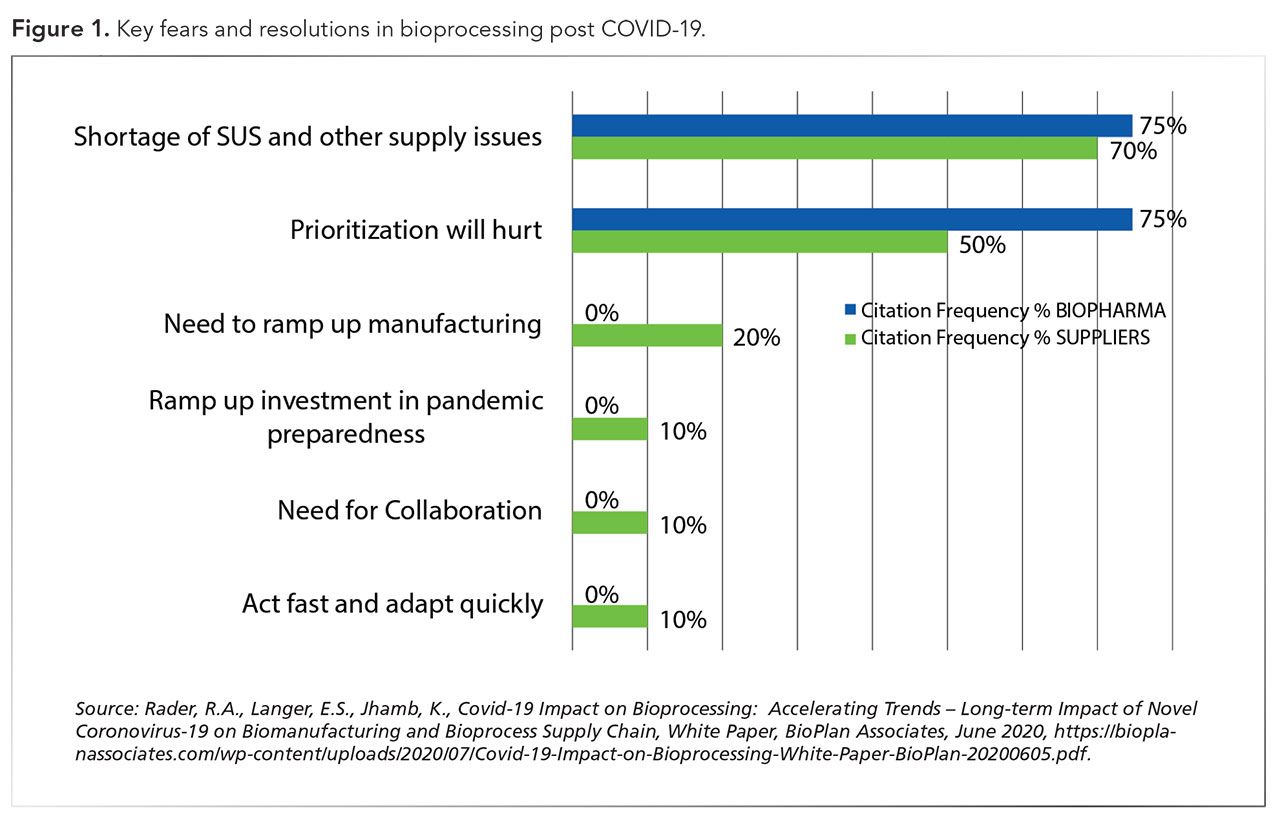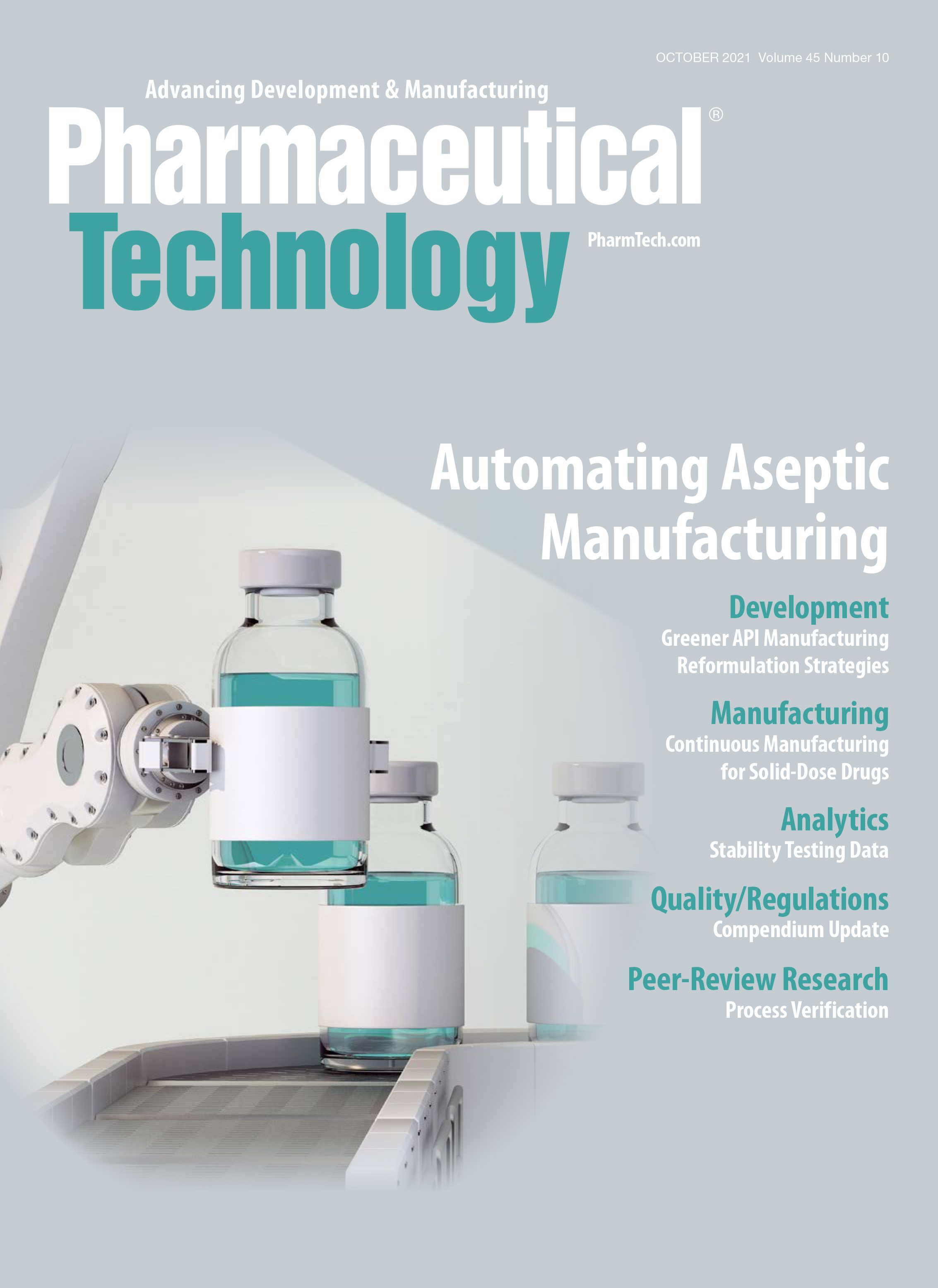Editor's Note
Editor's Note: This article is published in Pharmaceutical Technology Europe's October 2021 issue.
Almost half of pharmaceutical industry profits continue to come from biopharmaceuticals.
Dan Race/Stock.Adobe.com

The current biopharmaceutical industry is estimated at more than $400 billion/year revenue and continues to grow at a healthy rate. Biopharmaceutical revenue and related aspects, including R&D investments and bioprocessing, are continuing to grow at slightly over 12% annually, essentially doubling approximately every five years, according to BioPlan Associates’ Annual Report and Survey of Biopharmaceutical Manufacturing (1). This consistent, robust growth is fueling the current trends affecting the bioprocessing segment.
The report shows that the industry continues to expand at its usual rate (1). This year’s survey of bioprocessing professionals included responses from more than 140 decision-makers in 25 countries along with 100 industry supplier/vendor respondents.
Editor's Note: This article is published in Pharmaceutical Technology Europe's October 2021 issue.
With biopharmaceuticals generally more expensive than other pharmaceuticals, nearly 50% of pharmaceutical industry profits continues to come from biopharmaceuticals. The world market for recombinant protein therapeutics is now approximately $250 billion, with non-recombinant vaccines, blood/plasma, and cellular products comprising nearly all the remainder. Growth includes many new product/technology areas now moving into the mainstream, such as cell and gene therapies and expanded approvals for new indications. International markets continue to grow, but mostly with biosimilars/biogenerics.
Biopharmaceuticals versus small-molecule drugs have simply proven themselves to be profitable investments, due to their insulation from major economic problems, such as those caused by COVID-19. Biopharmaceuticals generally provide much higher profits per sale and a higher likelihood of products attaining commercial success, including capturing market share. This is due to their more straightforward approach and tendencies to be developed for diseases and indications lacking in other good options for treatment, thus supporting relatively high sales prices.
The landscape for bioprocessing continues to evolve, driven by many externally imposed trends that have been combined with ongoing technological changes and internal progress in bioprocessing. These trends tend to take years to develop and evolve. Thus, most ongoing bioprocessing-related trends are not new and are reported after they become evident or familiar, making it difficult to cite when a specific trend starts and ends.The wild card in the bioprocessing landscape continues to be external forces, which can cause rapid acceleration and deceleration of developing and evolving trends. A recent example of this can be seen with the COVID-19 pandemic.
Overall, because of ongoing trends, the industry can expect more, including more of the same, in the bioprocessing sector, including:
The COVID-19 pandemic continues to have the largest impact on the industry, significantly impacting related future bioprocessing trends. An update to a 2020 supplemental study done by BioPlan, which conducted interviews with bioprocessing facility and supplier executives, is available (3).
In the short-term, the bioprocessing sector continues to experience relatively minor disruptions, proving itself again to be relatively resistant to disruptions, all while many other industries continue to experience significant reductions in R&D, manufacturing, and sales. The biopharmaceutical market is one that is generally deemed crucially important, with products that maintain a steady demand because of the seriousness of the diseases they tend to target. This lack of disruption has positioned the biopharmaceutical and bioprocessing sectors for rapid growth as the pandemic response continues to evolve and develop. This growth includes tens of billions of dollars invested in R&D and the manufacturing of vaccine doses to provide billions of doses per year of COVID-19 vaccines and potential boosters in coming years. This increase continues to have a trickle-down effect, spreading to non-pandemic-related industries as well. As a result of this build-up and investment, non-pandemic projects continue to be shifted out to contract manufacturing organizations (CMOs). Even smaller CMOs have seen an uptick in business as pandemic-related projects take priority in these facilities.
A new landscape is evolving for what bioprocessing will look like post COVID-19. Figure 1 summarizes results from interviews with product developer and bioprocessing supplier company executives regarding expectations for the impacts of the COVID-19 pandemic on the bioprocessing landscape, post pandemic.
Figure 1. Key fears and resolutions in bioprocessing post COVID-19. Figure courtesy of the author.

The top-ranked expectations coming from the COVID-19 pandemic, cited by ≥50% of respondents were:
Additional biopharma manufacturing trends include the following:
Each of these trends is being driven by the underlying global demand for these lifesaving therapeutics. COVID-19 has only accelerated the recognition of many trends and a general recognition of the contribution the industry has made to public health. There will be more changes as the world recovers from the pandemic and strategies related to supply chain security, facility planning, and other critical areas continue to evolve.
1. E.S. Langer, et al., Report and Survey of Biopharmaceutical Manufacturing Capacity and Production, 18th annual edition (BioPlan Associates, Rockville, MD, April 2021).
2. R.A. Rader and E.S. Langer, Top 1000+ Global Biopharmaceutical Facilities Index, BioPlan Associates, online database, www.top1000bio.com.
3. R.A. Rader, E.S. Langer, and K. Jhamb, “Covid-19 Impact on Bioprocessing: Accelerating Trends—Long-term Impact of Novel Coronovirus-19 on Biomanufacturing and Bioprocess Supply Chain,” White Paper, BioPlan Associates, June 2020.
David Lin, dlin@bioplanassociates.com, is the senior director, Technical Research, BioPlan Associates. With a Master’s in Molecular Biology, he has many years experience with biopharmaceutical and pharmaceutical life science research, including a diverse science and marketing background. Specializing in content creation and market research, www.bioplanassociates.com.
Pharmaceutical Technology Europe
Vol. 33, No. 10
October 2021
Pages: 42-43
When referring to this article, please cite it as D. Lin, “Trends Affecting Biopharmaceutical Manufacturing,” Pharmaceutical Technology Europe, 33 (10) 2021.
